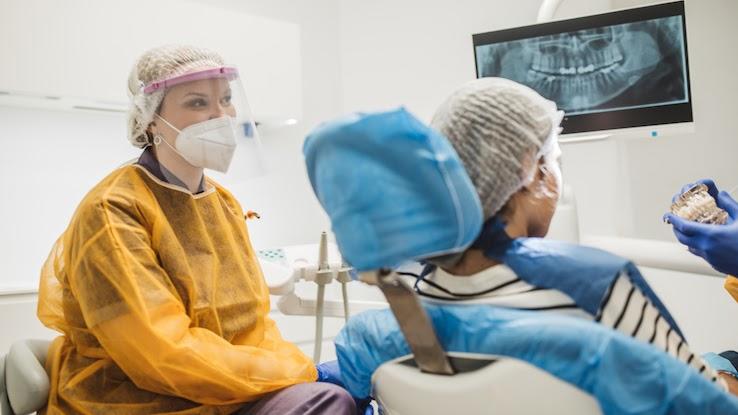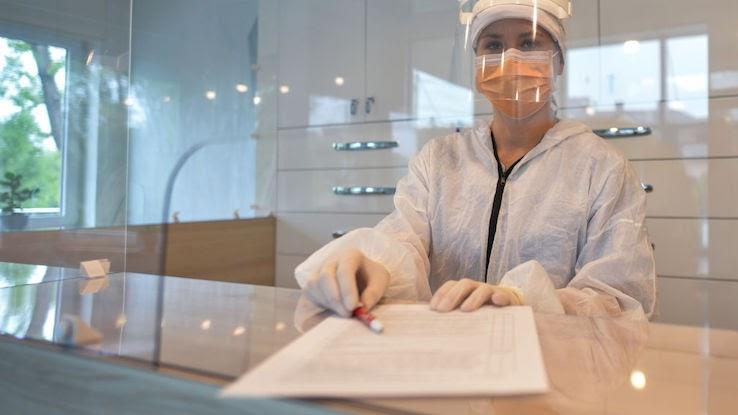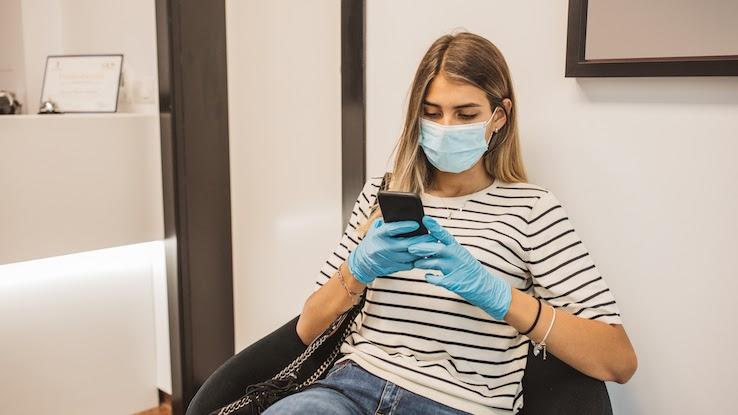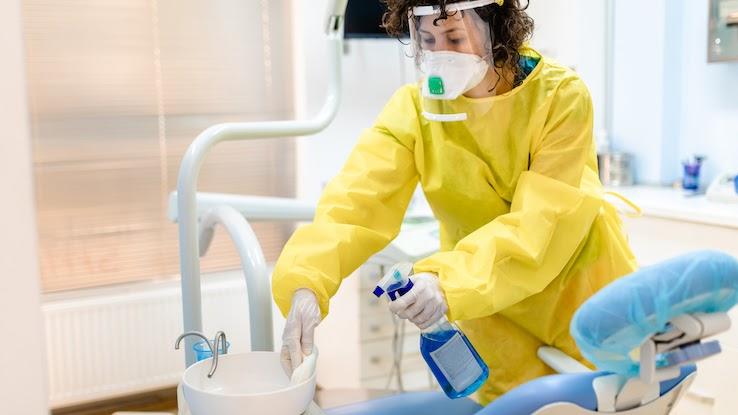
In March of 2020, the coronavirus pandemic shut nearly everything down. Only essential businesses remained open, with everything from shopping malls to gyms and even dental practices shuttered to slow the spread of the virus. As the United States and the rest of the world began to slowly reopen in late May and early June, life was definitely different. Face masks were commonplace, social distancing became the new norm and new procedures and precautions were implemented for everything — including dental practices.
Because dentists and dental hygienists come into close contact with patients’ mouths, they’re at a greater risk of contracting the virus if they don’t protect themselves properly. During the shutdown, some dental offices remained open for emergencies if they had proper personal protective equipment (PPE), such as gowns and masks. However, many stayed closed.
Now that the reopening process has happened in many areas, your dentist may have started welcoming patients into the office again. To prepare, learn more about the new safety practices and how to get ready for your next oral exam or procedure.
Start by Planning Ahead Before Your Visit
The Centers for Disease Control and Prevention (CDC) has set forth recommendations for dental practices to adopt going forward so that they can remain safe while still providing high-quality dental care during the pandemic. One of the first things that the CDC recommends is for dentists to prioritize patients and to provide care to those with emergency needs first. If you’re only getting a routine cleaning and checkup, your dentist office may call to reschedule your appointment.

Before your visit, a receptionist or someone from the office will likely call and ask you several questions about your overall health and recent activities. They’ll want to know if you’ve had COVID-19 or have been in contact with someone who has. They may also ask about how you’ve been feeling lately and whether you have any COVID-19 symptoms such as a fever, cough or shortness of breath. If you’ve traveled outside of your state or the country, the receptionist will also want to know about this.
You’ll also be asked to come to your visit alone. That might mean finding a sitter for your children or asking the person who drove you to wait in the car.
Take Precautions When You Arrive
When you arrive at the dentist, you may need to call and let the receptionist know you’re there before you enter the building. That way, they can make sure surfaces and items around the office and patient room have been sanitized properly before you enter. Depending on the office, they may come to the door and let you in when everything is ready. If you’re a new patient and haven’t been to the practice for an appointment before, you may be asked to complete new patient forms electronically or in your car; this takes a lot of time to complete in the waiting room.

The office will have new signs up about precautions and reminders to follow. To enter the facility, you’ll need to wear a protective mask that covers your nose and mouth and to stay 6 feet away from dental personnel, including the reception desk, until you’re in the chair. The receptionist will ask you the same series of questions that you answered over the phone in case anything changed between the earlier call and your appointment. Then, they’ll take your temperature with a non-contact thermometer.
If your temperature is above 100.4°F, you may need to go home, quarantine and return for an appointment in a few weeks. However, it’s possible that your fever may be due to a dental condition, such as an infection. If you have symptoms that are consistent with a dental diagnosis, not COVID-19, the dentist may still choose to provide care.
Your Appointment Will Be the Same — Mostly
The office may look quite different to you. If it seems empty, that’s because the CDC recommends that only a certain number of patients be there at one time, and the organization also recommends that staff remove magazines, kids’ toys and other items that are frequently touched. Depending on the staff members’ comfort level, you may even be the only patient scheduled. Even if you’re not, the CDC recommends that patients be scheduled with 15 minutes between appointments so there’s time to sanitize all of the surfaces, including the chair.

You’ll also notice that all of the chairs in the waiting room are at least 6 feet apart — or removed entirely — and that the reception staff is behind plexiglas. This is to protect everyone from sneezes and coughs and maintain proper social distancing measures. Dental staff will wear masks and gowns at all times and may also wear complete face shields over their masks. It’s likely that the dental hygienist and dentist will opt for this extra protection — for their sake and yours.
It’s normal to have concerns about how all these changes might impact the quality of your care. Your dental procedures shouldn’t be much different from your normal experience at the office, even with the new safety practices in place. While you’ll need to wear a face covering or mask to enter the facility, your hygienist or dentist will ask you to remove it once you’re settled in the patient chair so they can perform your dental work.
You’ll likely keep the mask off the entire time you’re in the dentist chair. However, when your procedure is over and you’re walking back through the reception area, and while you’re at the desk paying for your services, you’ll need to put your mask back on again. Otherwise, your dental visit should remain mostly unchanged. Rest assured that your dentist and the staff members are taking extra care and precautions to keep you (and themselves) safe and healthy during this time.





